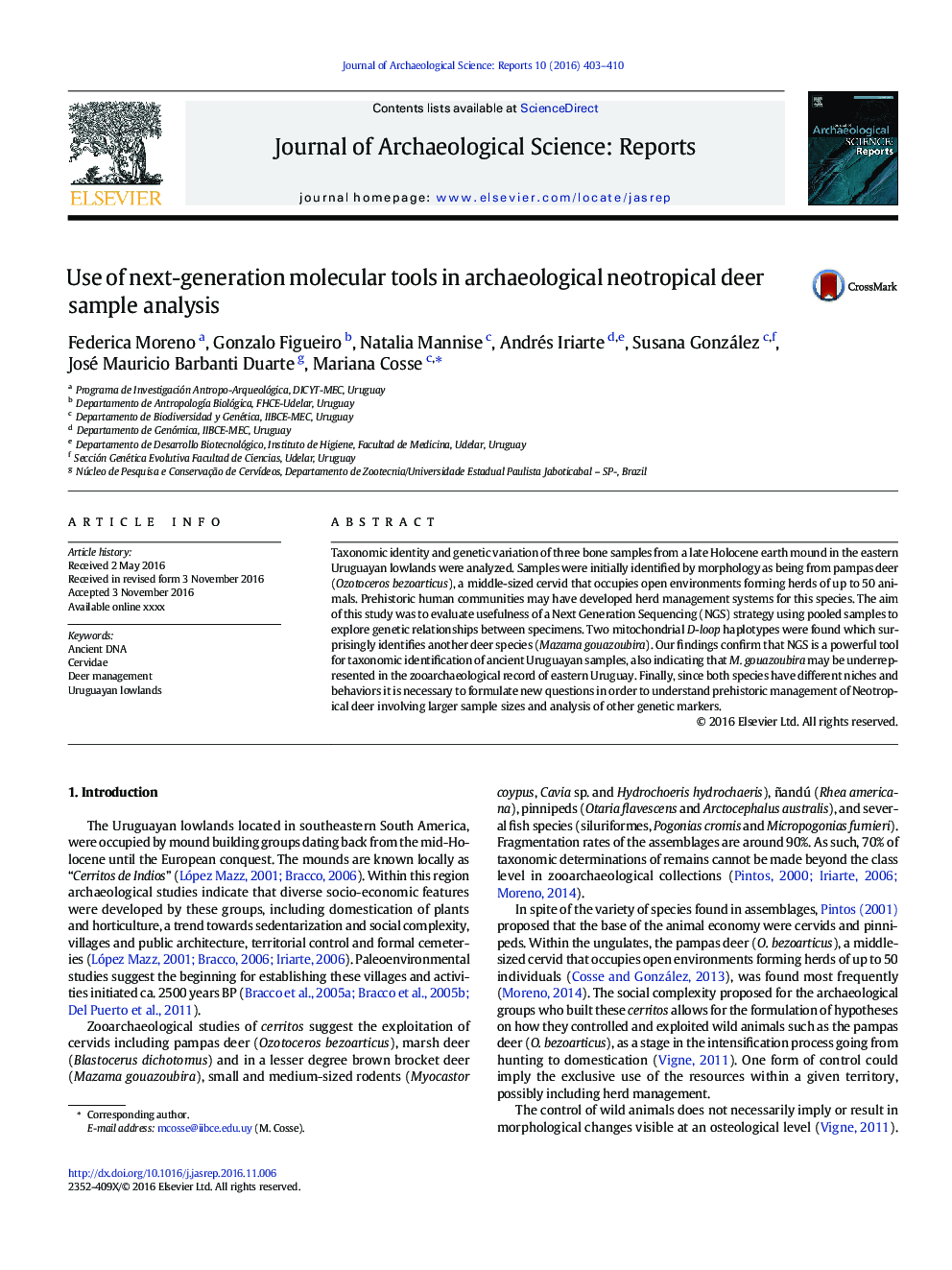| Article ID | Journal | Published Year | Pages | File Type |
|---|---|---|---|---|
| 5112252 | Journal of Archaeological Science: Reports | 2016 | 8 Pages |
Abstract
Taxonomic identity and genetic variation of three bone samples from a late Holocene earth mound in the eastern Uruguayan lowlands were analyzed. Samples were initially identified by morphology as being from pampas deer (Ozotoceros bezoarticus), a middle-sized cervid that occupies open environments forming herds of up to 50 animals. Prehistoric human communities may have developed herd management systems for this species. The aim of this study was to evaluate usefulness of a Next Generation Sequencing (NGS) strategy using pooled samples to explore genetic relationships between specimens. Two mitochondrial D-loop haplotypes were found which surprisingly identifies another deer species (Mazama gouazoubira). Our findings confirm that NGS is a powerful tool for taxonomic identification of ancient Uruguayan samples, also indicating that M. gouazoubira may be underrepresented in the zooarchaeological record of eastern Uruguay. Finally, since both species have different niches and behaviors it is necessary to formulate new questions in order to understand prehistoric management of Neotropical deer involving larger sample sizes and analysis of other genetic markers.
Keywords
Related Topics
Social Sciences and Humanities
Arts and Humanities
History
Authors
Federica Moreno, Gonzalo Figueiro, Natalia Mannise, Andrés Iriarte, Susana González, José Mauricio Barbanti Duarte, Mariana Cosse,
